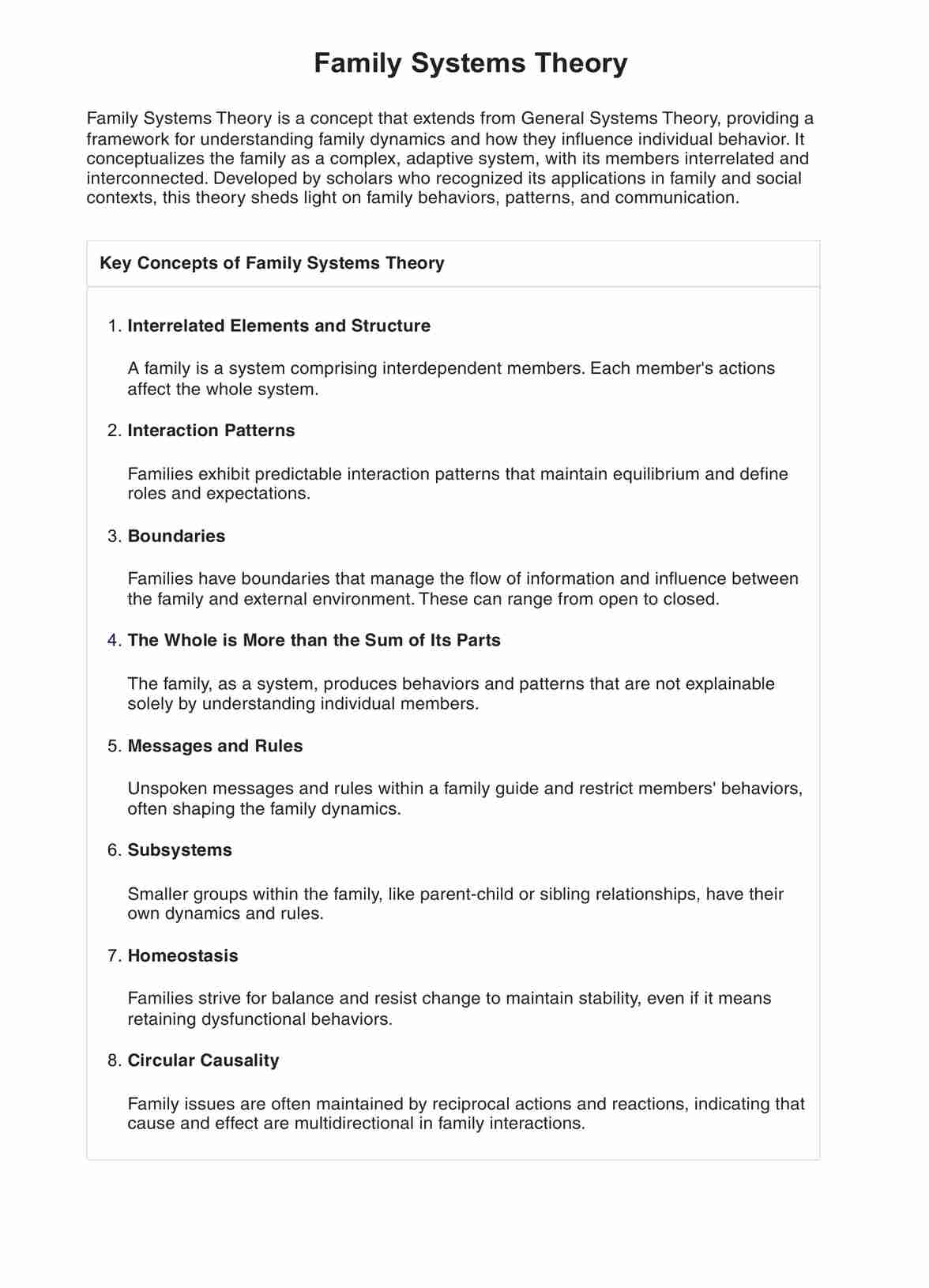Family systems theory helps families by providing a framework to understand complex family dynamics, identify patterns, and address issues collectively, fostering healthier relationships and improved communication.

Family System Theory PDF
Discover the benefits of Family System Theory in therapy. Our PDF guide aids mental health professionals in enhancing family dynamics.
Use Template
Family System Theory PDF Template
Commonly asked questions
Family problems can significantly impact an individual's emotional well-being, stress levels, and overall mental health, often influencing behavior, self-esteem, and relationships outside the family.
Family systems theory is instrumental in modern families deciphering intricate interaction patterns, adapting to evolving family structures, and addressing challenges context-sensitively, enhancing family cohesion.
EHR and practice management software
Get started for free
*No credit card required
Free
$0/usd
Unlimited clients
Telehealth
1GB of storage
Client portal text
Automated billing and online payments











